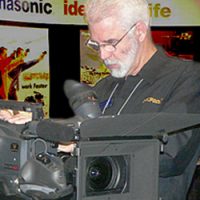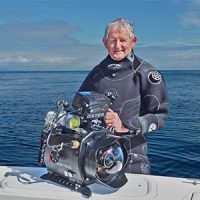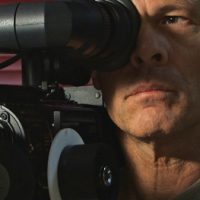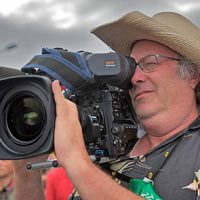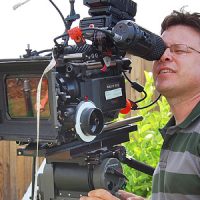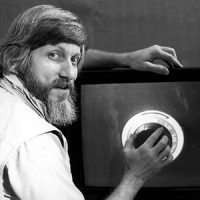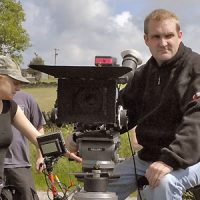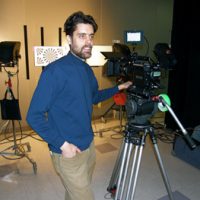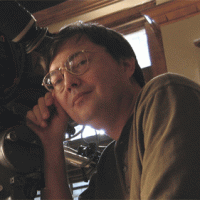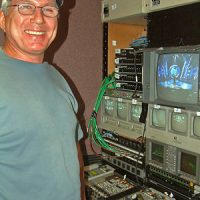Art Adams
Tech Tips
DSC OneShot
A New Chart for Film-Style Production–The DSC OneShot
The days where we could set printer lights using a simple gray card are gone.
This is a chart for the new digital “raw” and “log” age.
Jason Marraccini
Video Contracts
Why You Need Contracts for Video Production
The world of legal contracts can be incredibly daunting, especially if you’re a freelancer or new business owner.
Adam Wilt
Why BIGGER is Better
What gives large formats “depth”, “roundness”, and “dimensionality”?
Howdy! Head chock-full of theories? Got your shot list and scorecard? Or did you skip ahead, because you’re as frustrated as I am …
Reid Robertson
Back Focus
The instructions in most camera Operation Manuals are good, but occasionally omit a critical element.
Always remember when performing a “flange-back” adjustment (as Back Focus is sometimes called) the Iris should be FULLY OPEN.
Tom Campbell
Veteran marine wildlife cinematographer’s tips,
that might help achieve a success
When David at DSC asked me to do an article on some shooting tips for budding or experienced photographers and cinematographers, my first thought was to write up an accumulation of technical tips that might be helpful.
Dale Franklin
Are you making the most of the White Balance option on your camera?
White balancing a camera at arm’s length in water can be very different to white balancing when the card is 20-30 feet away as the increased distance through water will noticeably cool the image.
Wayne Norton
Getting the Most from your HD Video Camera
Calibration and Exposure Control
The great thing about the new Pro HD cameras is their ability to totally adjust the color matrix. Using the DSC color chip chart, tape measure, two equal light sources
Gary Adcock
Real World Use of DSC's Fairburn 3-D Chart
Last Sunday, I was asked to present an introduction and overview on 3D and 3D production and alignment procedures to the Midwest members of the Camera Union.
John Sharaf
Exposure for Sony S-Log with New DSC Chart
One of the most compelling reasons to use the Sony SRW9000, F23 or F35 is the Sony Log Curve feature, also known as “S-Log”. This allows extended dynamic range of twelve stops vs. a more typical range of 8 stops in a conventional 709 picture.
Dave Adams
Selecting Production Parameters to Ensure that Picture Quality Accommodates the Intended and Possible Future Imaging Systems
Many people have written about using a CDM chart to obtain an optimised matrix for their camera. In a moment I will discuss the best technique that I believe enables you to do this,
Art Adams
Matching Multiple Cameras
My suggestion was to shoot a perfectly lit and exposed DSC chart on all three cameras, using the same criteria for setting exposure (placing the white chip on the chart on the same luminance value for all three cameras) in order to facilitate post color matching.
C. R. Caillouet
Skin tone Waveform Levels
There is nothing magic about 70% video on Caucasian skin tones. The level depends on the impression that you are trying to achieve with the scene. For me as an engineer, the most important issues are to prevent the color components of skin tones from being clipped and to keep sufficient …
Walt Lindblom
Compromise between Color Accuracy and Signal Noise
At NASA our objective is to capture the highest quality and most accurate images possible. However, there can be a trade-off between color accuracy and overall image quality which impacts on how the cameras are aligned and the original image is captured.
Dan Mulligan
Do You Waveform Monitor the Lutted Image or the S-Log
I waveform the S-Log, the LUTs on set can wack out the waveform (imagine waveforming the Rec 709 output, ouch!) and they really are, for most reasonable purposes, for comfort viewing only.
David Blackham
Continuous Light Sources
There is a growing trend to use fluorescent, LED and discharge light sources for film and video production. This is good news for the environment as these light sources use less power than conventional studio lights.
D. Gregor Hagey
Red One and CMOS Static
Every time you change a lens on a digital camera such as the Red One, be sure to check the sensor for dust. The single CMOS sensor has a static charge that attracts dust (just like DSLRs).
Robert Goodman
Creating a Look
Creating special looks for any camera starts with a baseline. I establish that baseline using a ChromaDuMonde chart. Once you set the camera up to what is essentially normalized technical accurate reproduction, you can begin to deviate from that norm.
Bruce Alan Greene
Do You Waveform Monitor the Lutted Image or the S-Log
On my last major Varicam project I conducted a film out test and included a variety of detail settings in the test. After viewing the film print on the big screen I selected a level of detail that I believed added enough “punch” …
David Mullen
Tips on HD
When shooting digitally and recording to a fairly compressed format like HDCAM / DVCPRO-HD, I sort of subscribe to the “fifty-fifty” thinking (although the true breakdown may lean more towards in-camera than post) …
Art Adams
Green Screen Technique
The trick isn’t so much to get the screen bright as it is to make it saturated. I light the screen to 55-60 units on the scope and then use the vectorscope to check and make sure I’ve got lots of saturation. I’ve always had success that way.
Mike Brennan
Aberration Issues
For a few years I’ve assumed that it could be worth spending many dollars on high quality HD zooms to improve the performance of wide shots that all seem a little soft on HD.
Charlie Goldman
Color Bar Symmetry
Producing consistent accurate color reproduction can be a challenge, particularly under different lighting conditions. Whether I am shooting the Olympics, Rock concerts, or Ice hockey I use the same basic technique.
Marc Spiwak

Understanding Video Test Charts
For the casual camcorder user, shooting great video is a cinch; there’s nothing to it. You just turn on the camera, make sure everything’s set to Auto, and point and shoot. Even working the zoom is a piece of cake. But professional video production is a lot different.
Art Adams
Art of the manual white balance
White balancing a camera is only half the story. Now we have to white balance our lights.
Back in my Betacam days I learned that one of the easiest ways to get myself into trouble was to auto white balance.





